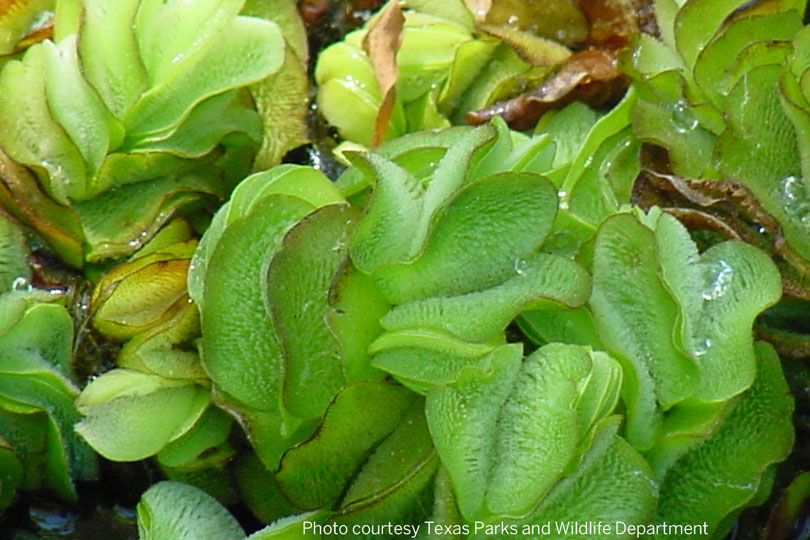By Justin Walker
Communications Specialist
A total of 30 acres of giant salvinia was found by Texas Parks and Wildlife Department (TPWD) staff at Lake Nacogdoches last week.
TPWD inland fisheries staff found the invasive species in multiple locations across the lake. The TPWD Brookeland aquatic habitat enhancement (AHE) team lead John Findeisen said they are treating the areas with a combination of giant salvinia weevils and application of contact herbicide on larger mats.
“We will use weevils in the areas where the giant salvinia is being contained by other vegetation and only treat mats of salvinia when they form,” Findeisen said. “The containment vegetation—mainly consisting of cutgrass and torpedo grass—is crucial to the success of managing the giant salvinia at Lake Nacogdoches.”
Herbicidal treatment where the giant salvinia is being contained could exacerbate the problem, Findeisen said. While the containment vegetation is preventing it from spreading rapidly throughout the lake, it can also block the herbicide from landing on its intended target.
TPWD staff believe the giant salvinia is scattered throughout the lake just enough that eradication is almost impossible.
“We will be treating the larger mats of giant salvinia t0 manage the infestation the best we can,” Findeisen said. “But we still need boaters, anglers and duck hunters to do their part and be diligent about cleaning, draining and drying their equipment when traveling from lake to lake—especially in East Texas where invasive species like giant salvinia thrive.”
The invasive plant first appeared in Texas in 1998 when it was discovered on Toledo Bend. Since then, infestations have occurred at Sam Rayburn Lake, Caddo Lake, Lake O’ the Pines, Lake Palestine, Martin Creek Lake, Lake Fork and now Nacogdoches Lake.
Boaters and hunters are urged to stop the spread of invasive species such as the giant salvinia by inspecting, draining and washing their boats each time they leave a body of water.
Learn more about invasive species in Texas and how to prevent their spread by visiting TexasInvasives.org.

